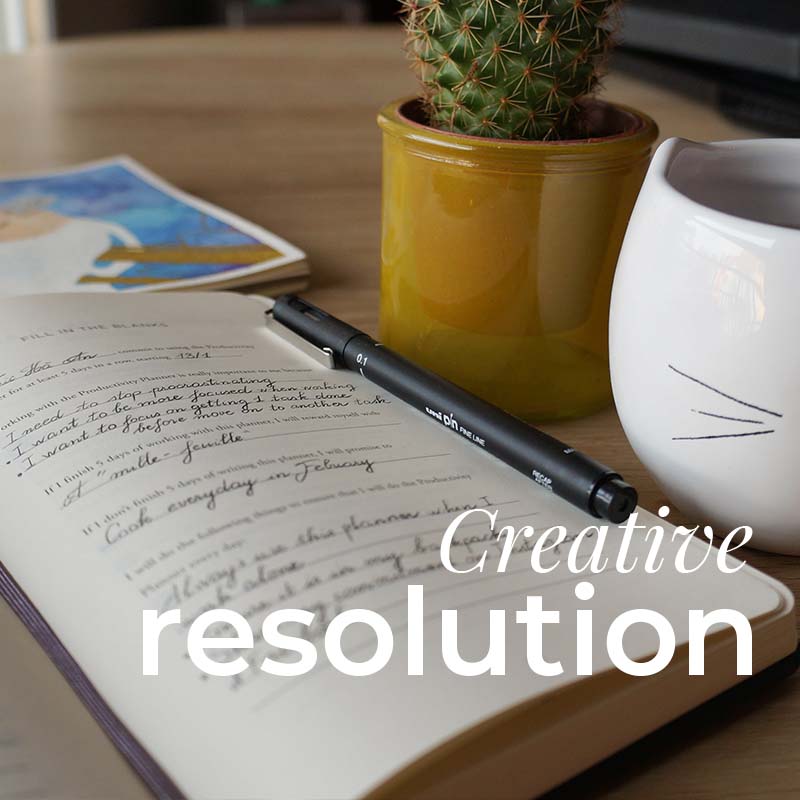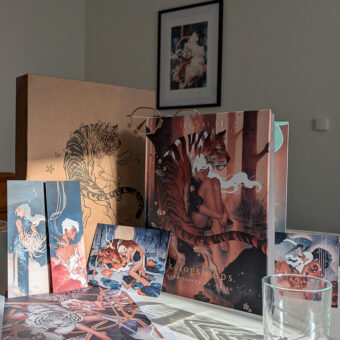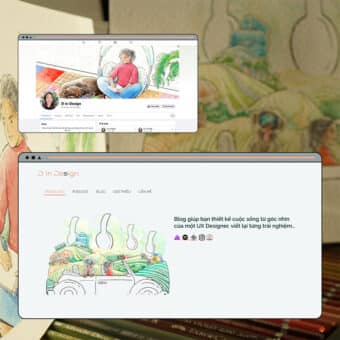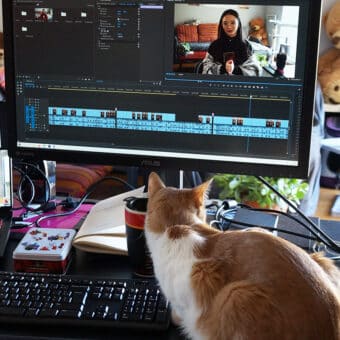Edited by my childhood friend Nguyen Viet Chau Linh
This article is a continuation of the article “What to do so that your creative resolutions won’t fail this year! (1/2): The reality behind creative resolution and how to define it in a smart way”, published on January 5, 2022.
Part two:
The big trap and the ultimate obstacle that prevent us from changing our life with our creative resolution
Third problem: choosing the wrong data
In this digital age, we are exposed to multiple figures that immediately reflect the level of success of a creator: the TOP trending ranking, the number of followers, the number of views, the number of likes, the number of sales…
These results appeal to all creators, especially those who would like to take the leap and start a creator career.
Except that the appreciation of a creation is subjective. Even if you have taken care of your work with all your heart, it’s the consumers (spectators, readers, listeners, etc.) who have a say in the reception of it. On the other hand, these data also depend on algorithms, on the effectiveness of the communication strategies, on the state of the market … In most cases, when you start, you have neither the experience nor the history to set a goal with those numbers.
If your resolution is to build a YouTube channel with 100,000 subscribers within a year, do you know how to find those 100,000 people?
If you already have a community on other platforms (blog, podcast, social networks …) can you estimate the conversion rate? If you haven’t had an established community yet, how can you reach an audience?
Can you control this?
What if we turn our attention to what we can control?
Instead of stressing out trying to get the results over which we have no control, we can focus on objective and quantified data, visible to everyone, but completely controllable.
Let’s go back to the example of the YouTube channel launch, there are many data that only depend on us: the number of videos posted, the length of each video, the frequency, the quality…
Sometimes we tend to consider this kind of goal as less spectacular. However, it’s once we start that we find out an equally high level of challenge.
Again, a year seems long, but to release 30 YouTube videos per year, you need to produce 2 to 3 videos per month. About every two weeks, a video must be ready to post. That is, within two weeks, you must be able to write the script, shoot, edit, make the thumbnail, write the descriptions, upload, share on social networks or forums,…, and for a whole year.
However, there is one factor that we do not control, but we are all expect: the opportunity
Your resolution is an excellent compass to help you decide whether to accept an opportunity or not.
In 2015, the year when I fixed the ambitious but fuzzy resolution to “quit engineering school and become an artist”, I was spotted by an organization to work on visual supports for their projects, being unpaid, with the promise that soon they would have cash inflows and I would get compensation as soon as they get profit.
Having no knowledge of the job market in France, and having been belittled during my teenage, all I knew was: a real company spotted me! I accepted right away, thinking that finally, my resolution started to come true.
Unfortunately, it was a very bad decision.
This job required a single technical skill that I already mastered. The tasks gave me no freedom to discover or develop other skills.
The assignments had a very short deadline that overlapped my class time and my student part-time job which I couldn’t quit because these assignments did not bring me any income.
The commitment to the organization also closed the door to other small, more creative projects.
Several months went by, I still hadn’t become a professional artist, I was still stuck with my studies, and on top of that, stuck in a job with no development possibilities and no pay.
The job itself wasn’t bad, the team was pretty serious and motivated, but if I had set my resolution in concrete terms, I would have known right away that this work was moving me away from my resolution.
But even after setting a resolution that suits you perfectly, there is still the biggest hurdle:
The ultimate problem: Long-term motivation
In most cases, creative resolution is not achieved with a single one-shot action. Rather, it is a long, thorny road.
With a lot of willpower, we are ready to attack in January until our first slump in March, followed by the self-questioning in April. Before we understand where all our doubts come from, May arrives with life’s unforeseen events knocking at the door and pushing our great resolve aside. In August, with the summer vacations, we manage to free up a little more time and we try to get back on track before losing momentum following the start of the school year in September. November approaches and we start to panic as we watch the layer of dust thickened on our resolution. December ends with our efforts to pick up the crumbs of a broken self-confidence.
Does this scenario sound familiar to you?
The lasting change that creative resolution brings is based on daily actions such as practice, construction, production… carried out in a studious, patient, frequent manner.
How can we keep constant endurance and motivation?
What if we put our resolution at the top of a staircase and approach it by going step by step?
This is quite possible if you divide your resolution into sub-goals. These sub-goals are like steps on a staircase that allow you to move forward little by little.
Each step achieved is a small victory that generates dopamine, “the pleasure molecule”, which is at the heart of our mind’s reward system. This system gives us a feeling of satisfaction after finishing a task. Once the reward / reinforcement system is activated, you will want to reproduce this feeling, and this desire will push you to achieve the following sub-objectives.
In addition, each sub-objective achieved will help you visualize your progress.
Ideally, you set your sub-goals by following the S.M.A.R.T. criteria (see Part one)
Here are 5 of the sub-goals that led me to my illustrator career today:
- Follow the “Illustration, l’Atelier” training course taught by an experienced illustrator to learn the concrete functioning of the profession in 3 months;
- Do the market survey in 1 month;
- Define a unique, recognizable drawing style that corresponds to my target client before April 2021;
- Find the status that allows me to work as an illustrator in France and the procedures to follow before June 2021;
- Build a website and launch it in December 2021.
Before defining each sub-goal, it is important to break it down into several steps, or even mini-steps.
Let’s take the “Build a website” sub-goal. Have you tried it before? What do you want to put on the website? Do you know the building stages? Where can you get information to define the steps? Can you estimate the turnaround time for each step? All of these questions make each sub-goal achievable and the resolution viable.
Another point to keep in mind: even though we have a SMART resolution with a solid plan of action, as humans we keep changing every day, our living environment is not fixed and our situation is likely to evolve. Our resolution cannot be rigidly unchangeable.
It is essential to re-evaluate its resolution.
The direction, motivation, realism and timing of the resolution should be re-evaluated regularly in order to make the necessary adjustments.
This review shouldn’t come too early to avoid over-analyzing and questioning with every slack or changing your mind every time you hear about a new idea for testing. Nor should it happen after you have invested everything by making no return commitments.
The ideal frequency depends on how each of us reacts during the course of a project. Do you know when your first discouragement come? What are the warning signs when you take the wrong turn?
Personally, doing a check-up every 3 months is a pace that suits me. The three-month period is long enough to see progress and short enough to change direction if necessary.
Every three months, I ask myself the question: Why THIS resolution at THIS precise moment? Is the answer I provided at the start of the year still relevant?
Starting a life change with creative resolution is an individual process. Even with a well-established action plan, we cannot avoid moments of weariness. Time flies, a year goes by at the speed of light, when we realize how far the resolution is, all of a sudden we feel alone in this world. Not to mention the days when we feel like the whole universe is ganging up on us. This is the perfect time for the hidden enemy of motivation to show up: loneliness.
Fighting loneliness on the long road
The solution seems obvious: share the creative resolution with other people.
In the book Your Time is Infinite (Votre temps est infini), Fabien Olicard claims that talking to others about our goals plays a role in success because we integrate our ego into the issues.
Sharing your resolve with the person you admire is often a good way to push yourself forward. Since you want to make a good impression on this person, you will have one more reason to accomplish your resolution.
In my case, I choose to share mine only with the closest people with whom I already share all my creative ideas. Until now, I never announced my resolutions in public because I didn’t want to deal with remarks, curious questions, judgments and doubts concerning my choices.
Following the resolution together can help keep the momentum going.
As with resolutions such as “play sports regularly” or “stop smoking”, the communication with someone who is in the same situation encourages mutual support to boost you at every moment of doldrums.
But the companion choice must be made with rigor. Having the same sort of resolution is not a sufficient criterion.
One year, my buddy and I, 2 people with 2 big dreams, after each of us had set a big resolution, we decided to set aside a time each week to work side by side, as a mandatory weekly appointment.
Every time we met, after spending half an hour to say hello, to make a tea, to tell each other about our week, my buddy would start talking about his resolution. He threw himself into philosophical questions around his project, on existence, on the personal and universal impact of the project … And I started to do the same! It was so comforting to dream, to talk about my passion, to visualize the future in a positive way… I felt very light and hopeful after each meeting.
Three months later, none of us has moved forward on our resolution! Of course, talking about your vision all the time doesn’t help to advance!
My creative resolution of 2022
In 2021, I realized the dream of my life: to become an illustrator, and therefore an artist.
I decided to write this article when I realized that the big climb I took in 2021 is clearly the success of a creative life-changing resolution! This resolution was not set in January 2021, but in October 2020, exactly a year before its realization.
This type of resolution is so precious that we clearly cannot fix one per year! Besides, with all the happiness that this resolution brought me, I’m in no rush to make a life change again so soon!
The success of a great creative resolution doesn’t have to be an end in itself. In my case, this is the start of a long journey.
This year, for the very first time, I will be sharing my creative resolve in public.
In 2022, I would like to build a semi-monthly blog that follows the Q.V.C.A. * criteria on the subject of creativity, with a new article in three languages (French, Vietnamese, English) on the 5th and 15th of each month.
I’ve never been a blogger before, because when blogging was the big trend in Vietnam, I was not allow to use computer and my family couldn’t afford the internet anyway. And then, being complexed by my language level and my difficulties of expression, I never dared to take the plunge until recently.
You can follow the progress of this resolution on my blog every month. I look forward to receive your constructive feedbacks and encouragements.
If you’ve already set a creative resolution for this year or for the previous ones, will you be willing to share with me? I will be happy to read your feedback.
Happy New Year,
Keep creating!
Tu Ha An
* Q.V.C.A. stands for Quality, Value, Consistency, and Authenticity. This is a formula created by Alex Ikonn.
*Please consult the information on Copyright & Intellectual Property before copying or mentioning the content and images of tuhaan.com








